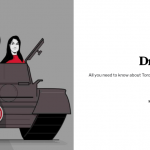Inside the student newsroom at ONA 2012
While journalists from around the world descended on San Francisco a few weeks ago to discuss the challenges facing journalism at the Online News Association’s annual conference, student journalists covered the event from the ONA’s Student Newsroom. Kelsey Rolfe — the lone Canadian student —shares her experience, describes the tools she used to get the stories, and talks about the most important lessons she learned.
While journalists from around the world descended on San Francisco a few weeks ago to discuss the challenges facing journalism at the Online News Association’s annual conference, student journalists covered the event from the ONA’s Student Newsroom. Kelsey Rolfe — the lone Canadian student —shares her experience, describes the tools she used to get the stories, and talks about the most important lessons she learned.

Journalists from all over the world descended on sunny San Francisco for the Online News Association's annual conference (ONA12) on Thursday September 20. They spent three jam-packed days taking in sessions on topics ranging from data journalism and Instagram, to how to transition out of the writing game and into online mediums like Tumblr and Twitter.
Along with 19 other journalism students, I was running around behind the scenes, covering the conference for ONA’s student newsroom. I was also the only Canadian student in the program, an intimidating but exciting position.
The student newsroom is a group of promising young journalists from around the globe (in my case, it was made up of 18 U.S. students, one Finnish student, and me), and is funded by a $20,000 scholarship from Google. The mandate of the newsroom is to provide coverage of the conference using new and emerging trends and technologies in journalism.
Going into the conference, I expected the newsroom would produce a couple of videos, and focus primarily on live-blogging and live-tweeting sessions for the benefit of journalists who couldn’t be in California.
[node:ad]

In reality, the focus was much different: our mentors and the newsroom coordinators encouraged us to be as creative as possible in our coverage, and to experiment with programs we’d never used before. I helped to compile daily round-ups of Instagram photos from conference attendees (seeing San Francisco through their eyes), and created “newsroom confessional” videos with two other students. Some of the other journalists I worked with played around with comprehensive data visuals, or were out reporting on the Hyatt workers strike happening just outside the hotel. Sitting in on a session only to live-blog it wasn’t emphasized, unless it was part of a bigger issue story.
Live-tweeting and blogging makes for great up-to-the-minute coverage, but there was so much more to play with.
The only time I actually live-blogged was at Twitter HQ, where they had an open-doors night for conference attendees. Mark Luckie, Twitter's manager of journalism and news, delivered a well-meaning but superfluous speech about how Twitter helped journalism, and all the journalists in the room felt compelled to live tweet it. It was Alanis Morissette-level irony, and seemed a little obvious — at least for anyone who’s been on Twitter for longer than a week.
To get more followers: “Tweet your beat! #TwitterHQ”
I never stepped foot into a session (though I would’ve liked to), but I did spend time pulling other journalists out of them, and into our confession booth. We asked them the tough questions, such as, “what’s the most overrated topic at ONA12?” (Twitter, Reddit, and the ambiguous “mobile.”) Each year has its own “buzz word” that is supposed to get people excited, but mostly makes them irritated.

Data journalism was a big buzz word this year, but it didn’t incite frustration so much as fear. It’s becoming increasingly clear that newsrooms need journalists who know how to use even basic code for data interactives. Jeff Stern, a fellow student in the newsroom, created a great piece during the conference to help journalists eliminate their fear of code. (It didn’t totally get rid of mine, but it helped — especially since it was fun and engaging.)
Speaking to Canadian journalists at a meet-up held by ONA Canada during the conference, I found that some were already embracing the idea of a journalist who can code. “One of the questions I’ve always had is, 'Can journalists learn how to program?' I think the answer is yes,” said Keith Robinson, a senior producer at globalnews.ca. “What I think a lot of newsrooms find is that there are a lot of tools allowing programmers to do great data visuals, but being able to code is a whole other thing. I’d really like to see more attempts to bring editorial skills and programming skills together.”
Other Canadians took away different lessons from the conference. Several pointed to the annual “10 Tech Trends” talk by Amy Webb of Webbmedia as the session with the most take-away. “Amy Webb was strong, she knows her business — and she only scared me a little bit!” said Rob Granatstein, a senior producer and director at canada.com. “It was interesting [to see] where things are moving in terms of verification.” Verification technology was one of Webb’s 10 trends, because she said consumers are becoming more distrustful about the content they read and watch. They want to be able to verify the quality of the source.
Monique Beech, the social media manager at Sun Media, said the message at this year’s conference differed from last year’s, in a positive way. Instead of pushing journalists to use every new technology to interact with their readers, Beech said she felt the message was to do what felt right for the newsroom. “The Keeping Sane session gave really concrete examples, and were very honest about what’s manageable, and about choosing your targets,” she said. “They encouraged you to jump on it, but if it doesn’t work for you, don’t worry about it.”
I saw that same message reinforced in the student newsroom: we weren’t asked to use every social media tool in the box, but rather use the ones that we felt told the stories in engaging ways. It’s something that I think newsrooms should take forward when they’re working with multimedia: use the tools that fit the stories, and disregard what doesn’t work.
I wish I’d had more opportunities to dig into and learn from the sessions while I was at the conference, like the other Canadians I talked to. I would have liked to hear for myself what forces are shaping journalism right now. But the practical, hands-on experience I got from working with the other students and mentors in the newsroom was the best, most immersive kind of learning I could have asked for.

Kelsey Rolfe is a journalism student at Ryerson University, and a recent participant in the ONA Student Newsroom. In the past she has worked for Today’s Bride, ParentsCanada, and Women’s Post, and is currently on assignment for the Canadian Press.




